
Cuauhtémoc, named after the former Aztec leader, is one of the 16 boroughs of Mexico City. It consists of the oldest parts of the city, extending over what was the entire city in the 1920s. This area is the historic and cultural center of the city, although it is not the geographical center. While it ranks only sixth in population, it generates about a third of the entire city's GDP, mostly through commerce and services. It is home to the Mexican Stock Exchange, the important tourist attractions of the historic center and Zona Rosa, and various skyscrapers such as the Torre Mayor and the Mexican headquarters of HSBC. It also contains numerous museums, libraries, government offices, markets and other commercial centers which can bring in as many as 5 million people each day to work, shop or visit cultural sites. This area has had problems with urban decay, especially in the historic center. Efforts to revitalize the historic center and some other areas have been ongoing since the 1990s, by both government and private entities. Such efforts have resulted in better public parks, such as the Alameda Central, which was renovated; the modification of streets such as 16 de Septiembre and Madero that have become exclusive for pedestrians.

Sevilla is a station on Line 1 the Mexico City Metro. It is located in the Cuauhtémoc borough in the centre of Mexico City, on Avenida Chapultepec and Sevilla street. It serves colonias Roma and Juárez.

Insurgentes is a station on the Line 1 of Mexico City Metro. It is located within the Glorieta de los Insurgentes at the intersection of Avenida de los Insurgentes and Avenida Chapultepec in Mexico City's Cuauhtémoc borough, close to the Zona Rosa shopping and entertainment district and the Colonia Roma, two of the most iconic neighborhoods in the city. In 2019, the station had an average ridership of 65,134 passengers per day, making it the 12th busiest station in the network.
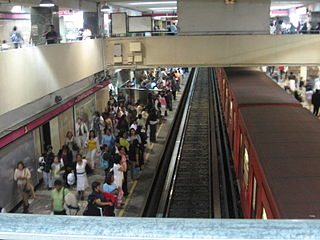
Chapultepec is a station on the Mexico City Metro. It is located in the Cuauhtémoc borough in the centre of Mexico City. In 2019, the station had an average ridership of 57,873 passengers per day, making it the 14th busiest station in the network.

Cuauhtémoc is a metro station on the Mexico City Metro Line 1. It is located at the northern extreme of Avenida Cuauhtémoc, in the Cuauhtémoc municipality, in the centre of Mexico City.

Metro División del Norte is a metro station along Line 3 of the Mexico City Metro. It is located in the Benito Juárez borough of Mexico City.
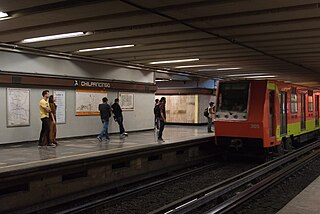
Metro Chilpancingo is an underground metro station along Line 9 of the Mexico City Metro. It is located in the Cuauhtémoc borough of Mexico City. It is very close to Metrobús station of the same name. In 2019, the station had an average ridership of 49,122 passengers per day, making it the busiest station in Line 9 and the 17th busiest station in the network.

Colonia Roma, also called La Roma or simply, Roma, is a district located in the Cuauhtémoc borough of Mexico City just west of the city's historic center, and in fact is no longer a single colonia (neighbourhood) but now two officially defined ones, Roma Norte and Roma Sur, divided by Coahuila street.
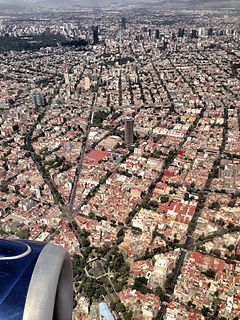
Colonia del Valle is a neighborhood in the Benito Juarez borough of Mexico City. It includes "...a great number of parks, vast and tree-lined streets, prestigious shopping malls, and some city landmarks...".

The Centro Urbano Benito Juárez, more commonly called the Multifamiliar Juárez, was a large apartment complex built on the southeast section of Colonia Roma, Mexico City in the late 1940s and early 1950s. It was one of several projects of this type by architect Mario Pani, designed to be semi-autonomous and incorporate as much outdoors space as possible. It also featured one of the largest mural works of the 20th century by artist Carlos Mérida. Most of the complex, and the mural work with it, were destroyed by the 1985 Mexico City earthquake and the demolition of many of the damaged buildings. Only a few of the original buildings still remain. Despite this, the Cuauhtémoc borough in which it is located still lists it as a separate colonia or neighborhood.

Colonia Cuauhtémoc is a colonia in the Cuauhtémoc municipality of central Mexico City. It is located just north of Paseo de la Reforma, west of the historic center of Mexico City.

Colonia Peralvillo is a colonia located in the Cuauhtémoc borough of Mexico City, just northwest of the city's historic center. It has been a poor area since colonial times, but the modern colonia was not established until the late 19th and early 20th centuries. Although the area has been the setting for a number of literary works and films, today the area is known for violence and crime, especially shootings and the selling of stolen auto parts.

Colonia Tabacalera is a colonia or neighborhood in the Cuauhtémoc borough of Mexico City, on the western border of the city's historic center. It was created in the late 19th century along with other nearby colonias such as Colonia San Rafael and Colonia Santa María la Ribera. From the early 1900s, it became a mixture of mansions and apartment buildings, with major constructions such as the now Monument to the Revolution and the El Moro skyscraper built in the first half of the century. By the 1950s, the area had a Bohemian reputation with writers, artists, and exiles living there. These included Fidel Castro and Ernesto “Che” Guevara who met each other and began planning the Cuban Revolution here. Today, the colonia is in decline with problems such as prostitution, crime, street vending and traffic. However, the area is still home to some of the many traditional Mexican cantinas that populated it in its heyday.

Colonia Nápoles is a colonia, is an officially recognized neighborhood in Benito Juárez borough, Mexico City, and one of the iconic Mid-Century neighborhoods of Mexico City along with Colonia Del Valle.
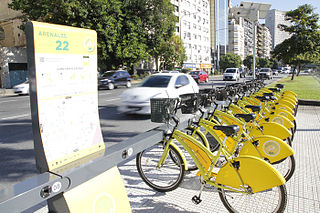
EcoBici is a station-based bicycle-sharing system in Buenos Aires, Argentina which began operating in 2010. The service is free of charge to both residents of the city and tourists, and is available 24 hours a day. After one hour of use on weekdays, two hours during the weekend and on holidays, the bike has to be returned and the user has to wait fifteen minutes to get another one. The system is still being expanded and, as of 2019, has 195 km (121 mi) of lanes completed. Stations are automatic and require the use of a smartphone application or a smart card, not in joint with the Sube card system, acquired upon registering for the service. Usage according to the terms of use is controlled via a rating system which can lead to restricted to total exclusion from the system.

Colonia Noche Buena is a neighborhood in Benito Juárez, Mexico City.
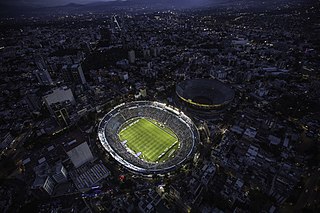
Ciudad de los Deportes is a neighborhood in Benito Juárez, Mexico City.

Colonia Insurgentes Mixcoac, or simply Insurgentes Mixcoac, is a neighborhood located in Benito Juárez, Mexico City.
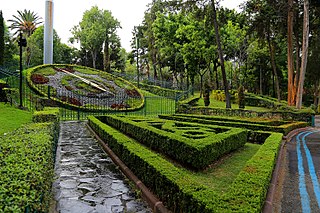
Colonia Extremadura Insurgentes, or simply Extremadura Insurgentes, is a neighborhood located in southwest Mexico City, famous for being home to Parque Hundido.

Colonia Insurgentes San Borja is a neighborhood in Benito Juárez, Mexico City.






















